Public Health
New recruits in war on flu
October 23, 2014
It’s a scary, potentially deadly communicable disease, and it could be coming soon to your neighborhood, school or workplace.
But unlike Ebola, which has been commanding worldwide media attention in recent weeks, influenza can be prevented with an effective, widely-available tool that you can get even at the corner drug store or supermarket.
We’re talking, of course, about the good old annual flu shot—which is being promoted in more varieties than ever this year, from nasal spray for kids to high dosages for seniors to vaccines that include an extra strain of virus for good measure.
With Ebola fears running high, county Department of Public Health officials are making a special push to persuade people to get immunized early in the season—whichever type of vaccination they choose—so that they don’t come down with the flu. Since flu can have some Ebola-like symptoms (including fever) it makes sense to minimize the number of people who get it and then head to the emergency room fearing the worst.
In other words, flu vaccinations may be an easier sell this season than they have been in years past.
The Ebola situation has created a “teachable moment,” said Michelle Parra, the director of Public Health’s immunization program. She said it is a chance to drive home the message that flu can be serious and even fatal, especially to those with underlying medical conditions or overall frail health.
Ebola has killed thousands in Africa, but at this point only two people are believed to have contracted the disease in the United States—both of them nurses who treated Thomas Eric Duncan, who was infected with the disease in Liberia and later died from it at a hospital in Texas. Flu, on the other hand, claims the lives of tens of thousands of Americans each year—up to 49,000 annually, according to the Centers for Disease Control. Those stricken include the 105 Los Angeles County residents—101 adults and four children— who died during the last flu season in 2013-14. That was the highest death toll in the county since the H1N1 pandemic of 2009-10, when 127 died.
No deaths and only “sporadic” flu activity have been reported to L.A. County so far this season, which officially runs from November 1 to March 31. But the county Department of Public Health emphasizes that it’s important to get the vaccine early, since it takes about two weeks to take full effect against flu viruses.
While the overall message is to get the vaccine, period, and as soon as possible, a number of new choices have been cropping up—giving consumers a robust array of options to talk over with their health care providers.
One is the first official recommendation that children aged 2 to 8 get nasal spray instead of a shot, unless they have a condition like asthma. The nasal mist also can be given to adults up to the age of 49.
Then there’s the high-dose vaccine for people 65 and over, which, according to a study recently reported in the New England Journal of Medicine, offers more protection for seniors than the traditional vaccine.
Finally, for the second year in a row, there are two different kinds of vaccine blends on the market—one containing three strains of viruses that cause the flu, the other made up of four.
While that’s good news overall (it indicates that manufacturers are becoming increasingly responsive to flu viruses circulating in other parts of the world before they reach the U.S.) it does present a bit of a communications quandary for health officials, according to L.J.Tan, chief strategy officer for the nonprofit Immunization Action Coalition.
That’s because the four-strain, or quadrivalent, vaccine accounts for only about half of the available vaccine. The CDC estimates that 76 million doses of the quadrivalent will be produced this season, while the rest of the 151 to 156 million doses that make up the nation’s total supply will be three-strain, or trivalent.
“We think it’s most important to get vaccinated [with whichever vaccine is most readily available.] We don’t want people going around saying, ‘Oh, the quadrivalent has four, it’s better, therefore I’m going to wait.’ Because by the time they wait it could be too late,” Tan said. “That’s one of the messaging nuances that we’re trying to figure out and get out there.”
Tan said researchers play a guessing game each year as they try to predict the virus strains heading our way in the coming flu season. The so-called B-strains are generally considered less lethal but are harder to predict, so the quadrivalent vaccine doubles down and includes both. The A-strains, meanwhile, are the most deadly, so both the trivalent and quadivalent vaccines include them—and that’s why health officials say it’s better to get a timely shot than to waste too much time shopping around.
In the midst of this expanding universe of vaccine choices, meanwhile, officials warn consumers not to be sidetracked by claims that flu shots give you the very disease you’re trying to avoid. “Flu shots cannot give you flu,” Public Health’s Parra said. “What happens is a lot of time people already have flu in their system” and wrongly attribute it to the vaccination they just received.
Finally, health experts emphasize that we’re all in this together. Even if you don’t feel personally vulnerable, it’s a good idea to get vaccinated to help those who are more susceptible.
“There’s so many people trying to push different messages, and I do think this idea of ‘Do it for your grandma’ is the one the CDC tries to lead with,” said Tan, of the Immunization Action Coalition. “Protect yourself, protect your family.”
More tips from the county Department of Public Health are here.
Posted 10/23/14
A heads-up on concussion risk
June 26, 2014
You’ve seen the recent headlines: Contact sports often lead to concussions, with possible long term effects. Earlier this month, former Miami Dolphins quarterback Dan Marino and 14 players became the latest to sue the NFL over concussions. Last year, PBS’ Frontline program League of Denial won a Peabody Award for investigating the NFL’s concussion crisis.
The story does not end with professional or even college sports: Studies show high school athletes are at double the risk of concussion as college players. Experts are also concerned about the cumulative effect of repeated concussion, which has been linked to temporary and permanent changes in the way the brain functions.
Heightened awareness is leading more young athletes to seek medical evaluation for possible concussions. The State of California has required concussion training for school coaches since Jan. 1, 2013.
Now, a new report by the Los Angeles County Department of Public Health provides a first-ever look at the problem of concussions in the L.A. region—and how rising awareness is leading to more and quicker treatment.
Overall, researchers found that 69,000 people were treated in emergency departments or admitted to hospitals in the county for concussions between 2005 and 2011. During that time, hospitalizations remained steady but the rate of emergency room visits soared by 58%–a finding that public health officials say reflects the public’s growing understanding of concussion symptoms and the importance of seeking medical attention.
By far, the highest rates of emergency visits were for young adults between the ages of 15 and 24. They accounted for nearly 30% of all such visits, almost twice as high as for any other age group. Roughly half of those individuals were hurt while playing football, with another 20% suffering injuries during soccer games. (Falls were the main cause of concussions among all age groups in L.A. County.)
While these findings were not unexpected for this younger age group, researchers were surprised by one unexplained discovery: Females, they found, reported more concussions than men in sports in which both play under similar rules, including basketball and soccer.
“It could be biomechanical, the way females are built versus males,” said Dr. Margaret Shih, director of the public health’s office of health assessment and epidemiology. She said it’s hard to draw a conclusion because women are traditionally more likely to seek medical help than men. “There’s still a lot of research that needs to be done,” she said.
County health officials say they hope their report will lead to heightened awareness not only in our emergency rooms, but on the playing field. And despite the rising numbers of emergency department visits, they think the numbers are still too low.
“I do believe that concussions are underreported,” said Andrea Welsing, director of the injury and violence prevention program for the public health department. She added that pressure to play is still keeping many injured athletes in the game, putting them at risk of further injury.
Although the report will not be distributed in hard-copy form, Welsing said the plan is to launch an e-mail campaign to include parents, coaches, teachers, pediatricians, sports medicine physicians, recreation center personnel and school nurses.
Welsing said the health department is not expecting schools and other youth sports organizations to hire additional medical staff, but rather to train coaches and others to recognize symptoms and realize the importance of taking a player out of the game until he or she can be medically evaluated.
Steven Grech, assistant athletic director for sports medicine and head athletic trainer at California State University, Northridge, said his university has done baseline testing for concussion for all contact sports since 2006. But the effort became more formalized in 2010, when the NCAA began requiring Division 1 institutions, including CSUN, to have a formal concussion management plan.
The biggest recent improvement at CSUN is in student awareness —the 2010 requirement included student education along with faculty training. Grech said CSUN fosters a culture where players look for symptoms in their teammates and roommates, not just themselves. This is particularly important during the summer, when there are no official team practices but athletes are still playing to stay in shape, Grech said.
“We have kids coming in saying, ‘Hey, I was playing pickup basketball just last night and got hit in the head and I’ve had a headache ever since, I couldn’t sleep last night, I’ve been dizzy,’” Grech said. “We’ve seen an increase in self-reporting over the last four years.”
Posted 6/26/14
Smoking out an LGBT foe
November 14, 2013
With gay men, lesbians and bisexuals firing up far more frequently than heterosexual Californians, health officials are moving to create effective anti-smoking campaigns to persuade LGBT smokers that quitting is smart, community-minded and even sexy.
One project, being rolled out by the Los Angeles County Department of Public Health later this month, plans to take an edgy “break up with tobacco” message into gay bars and clubs.
Meanwhile, the state has released an anti-smoking video aimed at the LGBT community. The video, which shows a couple of handsome young gay men leaving a bar together, doesn’t just target smoking—it also emphasizes the importance of saying no to second-hand smoke. When one of the men starts to light a cigarette outside the bar, the other gently pushes it away from his lips as a voice-over announcer says: “It’s time to speak up. We have to protect each other.”
Nationally, the Centers for Disease Control and Prevention have showcased a lesbian bartender in the widely-watched “Tips from Former Smokers” national tobacco education campaign. The ads feature real people discussing the painful and at-times disfiguring effects of tobacco. Ellie, the bartender, never smoked herself but started having asthma attacks after years of exposure to second-hand smoke on the job.
It’s not the first time that public health officials have tried to confront the problem. Several years ago, for instance, Los Angeles County provided grant funds to several clinics to conduct LGBT-oriented smoking cessation programs. That campaign’s tagline: “Learn how to quit smoking without being scared straight. (As if you could be.)”
But a strongly-entrenched LGBT smoking culture remains, even as overall smoking rates in California have dropped over the past three decades.
Statistics released in June by the state Department of Public Health’s Tobacco Control Program show that gays, lesbians and bisexuals are more than twice as likely to smoke as heterosexuals—27.4%, compared to 12.9%.
More than a quarter of gay men smoke, compared to 16% of straight men, the state found. Among lesbians, 24.4% smoke—a rate 2½ times that of heterosexual women.
What’s more, second-hand smoke is dangerously widespread. More than 40% of gays, lesbians and bisexuals reported that they sometimes allowed smoking in their homes, compared to 23.4% of heterosexuals. The state report draws on data collected in the California Adult Tobacco Study from 2005 to 2010 among self-identified gays, lesbians and bisexuals.
The reasons for the high smoking rates can be complex.
For one thing, stress can be higher in the LGBT community, sometimes compounded by issues associated with coming out or family disapproval, said Susan Cohen, health education consultant for the L.A. Gay & Lesbian Center. Perhaps even more powerful, she added, is a strong bar culture that fosters an “unfortunate partnering of cigarette smoking and alcohol,” even though indoor bar smoking is now outlawed in California.
Others note that while an overall culture of disapproval of smoking and second-hand smoke has grown in recent years, it’s been slower to take hold in the LGBT community, where tolerance is a strongly-held traditional value.
“They’re basically loath to tell other LGBTs what to do or not do…That’s what we believe is translating into a more live-and-let-live attitude toward second-hand smoke,” said Francisco Michel, a media specialist with the state Tobacco Control Program.
Another challenge is confronting tobacco industry advertising aimed at the LGBT community. While some have decried the targeting, others see it, oddly enough, as a sign of respect.
“Some folks say, ‘See, we’re just like any other market,’ ” Michel said.
That’s why health officials believe it’s important, and effective, to fight fire with fire, offering another story line—preferably one that is sophisticated and engaging—to offset Big Tobacco’s persuasive tactics.
“I do think we have to continue with counter-messaging,” said Cohen, of the Gay & Lesbian Center. “The tobacco industry spends billions to get us to smoke.”
Posted 10/31/13
Getting fired up over e-cigarettes
July 11, 2013
These days, e-cigarettes are smokin’ hot.
That guy sitting next to you in traffic, puffing on a pipe-like cylinder as clouds of vapor billow around his head, isn’t getting high—he’s ‘vaping.’
“Vape shops” are suddenly everywhere, some of them offering a lounge-style atmosphere for firing up and partaking of hundreds of flavor options—ranging from AppleCinnana to Yummy Gummy—for the nicotine-infused “e-juice” that creates vapor and delivers an adjustable dose of nicotine.
Big Tobacco is getting in on the act, too, with the makers of Marlboro and Camel preparing to sell their own brands of e-cigarettes, and the company that produces Newports buying the e-cig brand Blu.
But where there’s vape, there’s worry. Even though e-cig users contend that vaping helps reduce or eliminate their craving for dangerous regular smokes, public health experts, government officials and anti-smoking groups say it’s way too soon to assume the new devices are safe. E-cigs, they say, pose potential health hazards for smokers and those around them, and more study is needed to establish the risks.
“It is alarming that we’re seeing so many of these,” said Linda Aragon, director of the county’s Tobacco Control and Prevention Program. “You see a lot more of these vaping stores, or even vapor lounges that are popping up all over the place. We’re seeing much more of that than we have in the past.”

Marketing campaigns include bringing in Playboy's Miss November, Brittany Nola, for an e-cig launch party in New York.
Nicotine is, of course, highly addictive, and there are concerns that e-cigarettes’ kid-friendly flavor palette could attract underage smokers, or even pose an overdose hazard, particularly for small children who happen upon one of the “e-juice” flavor canisters. Researchers have found that propylene glycol, one of the main ingredients in the liquid, can be an irritant when inhaled. Concerns also have been raised about what happens when an array of potentially harmful substances found in some e-cigarettes are vaporized and inhaled by e-smokers and bystanders.
Los Angeles County, acting on motions by Supervisor Zev Yaroslavsky, has banned traditional cigarette smoking on beaches and in county parks, and requires tobacco retailers in unincorporated areas to be licensed. But it has not yet taken steps to regulate e-cigarettes, which can legally be sold in California to customers 18 years of age or older. The state Senate recently approved a bill by Senate Majority Leader Ellen Corbett that would make e-cigs subject to California’s smoke-free laws and ban their use in workplaces, public buildings and other locations that currently prohibit smoking. That bill is working its way through the Assembly and could reach Gov. Jerry Brown by this fall.
“We’ve worked hard to protect the public’s health by banning smoking in places where non-smokers would be adversely impacted,” Yaroslavsky said. “This new trend is a giant step backward from those efforts. Hopefully, the state legislature and the governor will solve that problem before the summer is over.”
Some municipalities around the state also are scrambling to impose e-cig restrictions, ranging from banning their use in public buildings to imposing a moratorium on new vape stores.
Starbucks has cracked down, too, banning e-cigs—along with the traditional kind—in its outdoor seating areas as of this June 1. And the issue’s gone global, with the World Health Organization this week joining the chorus of those urging caution in the use of what it terms “electronic nicotine delivery systems.”
Such warnings come against a backdrop of surging e-cig use. The federal Centers for Disease Control and Prevention reported that 21% of cigarette smokers have tried the electronic version, up from 10% in 2010.
The U.S. Food and Drug Administration says that consumers should not assume e-cigarettes are safe until more testing is done. In 2010, the FDA issued warning letters to five manufacturers for violations including “unsubstantiated claims and poor manufacturing practices.”
Vapers often say that e-cigs have made it easier for them to cut down on regular cigarettes or even to kick the habit altogether.
Aragon, of the county’s tobacco control program, doesn’t buy it.
“The reality is that there haven’t been enough studies to show that there is a sustained ‘quit,’ ” she said. “Our position is that folks who are trying to quit smoking should always use FDA-approved cessation resources, like nicotine patches, nicotine gum, Wellbutrin.”
Greg Simidy, a 21-year-old student who lives in Los Feliz, recently started vaping and said it enabled him to quit regular cigarettes “cold turkey.”
“I got into it with the intention of quitting smoking,” Simidy said, adding that he also “got into it because I saw everyone was doing it.”
On a sunny late morning this week, he was in a newly opened Hollywood store, Vaping Ape, looking to upgrade his equipment. “I want something that gives me the smoke, that feels better in the hand,” he said. And with the availability of tasty flavors like his current favorite, banana nut bread, he sees no reason to turn back.
“I think [cigarette] smoking is a thing of the past, to be honest,” he said.
One of the store’s owners, Jake Bautista, said his customers range from 18-year-olds to “a couple from Burbank in their mid-60s. They come in here every weekend and try new flavors.”
While Bautista said most of his customers want to quit smoking regular cigarettes, there’s also a cadre of style-conscious hobbyists out there who are attracted to the image e-cigs project.
“A lot of younger guys who are into fashion and shoes and stuff, they see their friends blowing clouds and they want to blow these big clouds,” Bautista said.
Bautista contends his product is safer than regular cigarettes and appealing for a number of other reasons, including that it leaves behind no tell-tale tobacco odors.
Michael Jay, a 21-year-old private chef from Oxnard who dropped into the Hollywood store this week, said vaping has helped him cut down his cigarette use and also improved his sense of taste and smell as he cooks.
He’s even turned his parents on to his new hobby.
“My mom and my dad smoked for 20, 30 years and they’re now using vapes,” he said. “It’s good to be able to help them.”
His folks are less enthusiastic, he said, about his rapidly expanding collection of e-cig flavors, which can range in price from $10 to $28, while starter kits for the smoking apparatus start at $65 and can go up to $350.
“I have a fanny pack full of flavors,” he said, rapidly ticking off “gummy blood, unicorn blood, blueberry lemonade, Belgian breakfast, crankberry, dragon’s breath, everything under the sun…They’re very customizable. It’s user-friendly now.”
Posted 7/10/13
Beware L.A. County’s rabid bat boom
September 12, 2012

Healthy bats, like the one shown above, fly by night and avoid humans. Watch out for daytime sightings.
They’ve shown up in homes in Malibu and Topanga, in a Burbank restroom, on a Van Nuys sidewalk and a closet in Hollywood. In a Santa Clarita barn. In a flower bed in Palmdale. In a cat’s mouth in Glendale. In the front door entrance to a Pasadena building and a Northridge home where five people were sleeping. In a Los Angeles school.
A record 45 rabid bats have been captured so far this year in the county—four and a half times the normal average for the area. Health officials say that so far, the reasons are unclear; last year’s count also was much higher than normal. But for safety reasons, members of the public are being urged to steer clear of the critters—and all wild animals—and to make sure that pets have up-to-date vaccinations for rabies.
“It is important that everyone understand the potential dangers posed to themselves and their pets, as most of these rabid bats have been found in and around homes,” Director of Public Health Dr. Jonathan E. Fielding said in a statement. “Children and teens especially should avoid handling bats or other wildlife, even if their intentions are to nurse an injured or ill animal back to health.”
Karen Ehnert, acting director of the county’s veterinary public health program, says she has been talking to local wildlife biologists, but so far hasn’t received any information on what might be causing the outbreak. “Whether there are more bats in the area and therefore more crowding, or some sick bats migrated in and started spreading it, we don’t know,” she says.
But she knew early this year that the incidence of bat rabies was going to be a problem.
“Usually if I start seeing cases in April and May, there’s more transmission going on,” she says. “Well, this year, I saw the first case in January.”
Typically, Ehnert says, she sees about ten rabid bats in an entire year in L.A. County, and by April, she had already counted nine cases. Moreover, she says, the percentage of captured bats testing positive for rabies has been rising.
“Usually only about 13% test positive,” says Ehnert. “But last year, it was up to 17% positive. And this year it was 20%.”
Only about 1% of bats are typically infected with rabies in nature, but they are the most common carriers in Los Angeles County, according to public health officials. Healthy bats eat insects, pollinate plants and typically fly only at night and avoid humans. However, the public health department warns that bats flying in daylight, or found on the ground or indoors near a sleeping person should be captured and tested for rabies.
Never pick up a bat with bare hands. Public Health recommends calling a local animal control agency (click here for a list of local animal control numbers), or, in urgent situations, putting on gloves and protective clothing and trapping the animal in a box or a bucket without touching it. Bats are protected by federal law and can only be removed via humane release; it is illegal to try to exterminate them.
If you are exposed to a bat, seek immediate medical attention; bats have very small, sharp teeth and their bites can be hard to detect. And don’t panic. Ehnert says that if you’re bitten, you can recover as long as you receive treatment before you start to develop symptoms. Los Angeles County hasn’t had a case of full-blown human rabies in more than 50 years.
Posted 9/12/12
Understanding the heat of the moment
August 9, 2012
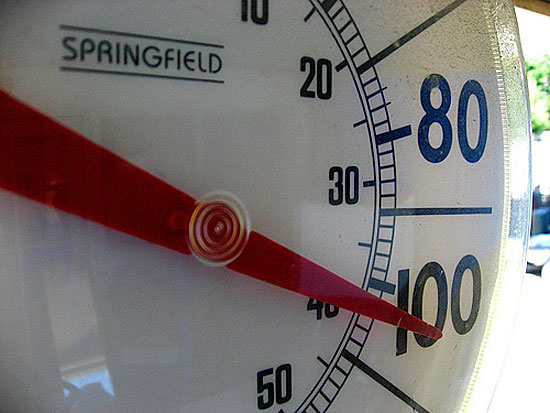
Heat plus humidity equals misery. Play it safe by following Public Health's tips for weathering the heat wave.
You don’t need a meteorologist to tell you it’s hot out there. But when planning how to cope, it helps to know what some of the weather jargon means.
When the Los Angeles County Department of Public Health declares a “Heat Advisory,” that means that the heat index—a number combining temperature and humidity to approximate what it feels like—has reached 95 or above. A “Heat Alert,” on the other hand, is issued when a heat index of 95 or above is forecast for two or more days. When a Heat Alert is issued, people are advised to take extra precautions and county cooling centers are opened to the public.
The current Heat Alert started Wednesday, August 8, and runs through Sunday, August 12. Affected areas include the San Fernando, San Gabriel, Santa Clarita and Antelope valleys, and Pomona.
The numbers behind the alerts explain a lot about how we feel.
For example, if it is 90 degrees outside with zero humidity, it will feel like 90 degrees. However, at 60 percent humidity, 90 degrees feels like 100 degrees, according to the heat index—and it also comes with the health risks of a 100-degree day. If the humidity were to reach as high as 90 percent during a 90 degree day, it would feel like a blistering 122 degrees.
According to the National Weather Service, we’re currently experiencing unusual humidity because of monsoonal moisture that is being pushed into the region by a complex of thunderstorms in Mexico and a tilted high pressure system over Nevada and New Mexico. In addition to the humidity, this moisture might also bring thunderstorms to L.A. County starting Friday and continuing through Sunday.
The heat itself, even without the humidity, has been historic. On Wednesday, a daily record high of 107 degrees was recorded in Woodland Hills, where today’s forecast calls for 106 degrees. That’s nine degrees above the monthly average, but still well below 119, the record temperature for all of L.A. County, recorded in Woodland Hills in July, 2006.
Coastal areas won’t be feeling the burn nearly as much. Thursday’s highs predicted for Malibu and Santa Monica are just 78 and 83 degrees, respectively—a relative day at the beach. In downtown L.A., the temperature is expected to approach 95 degrees.
Early August’s blazing temperatures come on heels of the hottest month ever recorded in the United States.
From a health and safety perspective, extreme heat should be handled with extreme caution. According to the Red Cross, high temperatures cause more annual fatalities in the U.S. than any other type of weather event. Children, the elderly, the disabled and pets are particularly vulnerable. Heat-related illnesses include heat rash, heat cramps, heat exhaustion and heatstroke—a life-threatening illness that requires immediate medical attention.
The L.A. County Department of Community and Senior Services maintains countywide cooling centers, including three in the San Fernando Valley, at ONEgeneration Senior Enrichment Center, San Fernando Recreation Park and San Fernando Valley Service Center. The department recommends calling ahead to ensure seating is available. The city of L.A. also manages cooling centers at various libraries, recreation centers and senior centers.
The Department of Public Health has a list of “healthy summer” tips for help staying safe in the heat, and additional advice is available online from the Centers for Disease Control and the Red Cross.
Posted 8/9/12
Taking baby fat off the menu in L.A.
August 2, 2012
Say bye-bye to those tater tots and juice drinks, baby. Day care workers all over Los Angeles County are about to get an education on how kids ought to eat.
Thanks to a recent initiative to release of hundreds of millions of dollars in funds for early childhood development programs, the Los Angeles County Department of Public Health got the go-ahead this week on a sweeping plan to school babysitters and childcare facilities in preventing childhood obesity.
The $6 million project initially will offer workshops, coaching and follow-up assistance to about 8,000 providers on age-appropriate nutrition, portion control and exercise. However, the service, underwritten by First 5 LA, is expected to eventually expand to all of the 20,000 or so licensed and exempt caretakers operating in the county, from big Head Start programs to family day care homes to neighborhood sitters.
The outreach is considered critical because obese children have a higher likelihood of obesity in adulthood, and childhood obesity is strongly associated with grave and costly health risks such as type 2 diabetes and, over time, heart disease.
More than 16% of preschoolers between the ages of 2 and 5 are overweight in the U.S., and more than 14% are obese, according to the Centers for Disease Control. This is especially true among low-income children; in Los Angeles County, the obesity rate among 3- and 4-year-olds in the federally funded Women, Infants and Children nutrition program is more than 20%.
Those rates tend to worsen as children get older. In California, 38% of fifth- seventh- and ninth- graders were obese or overweight in 2010; in Los Angeles County, that figure stood at about 42%.
More than 350,000 infants, toddlers and pre-schoolers here spend at least part of their day in child care, where the meals they get “leave a lot to be desired,” says Dr. Robert Gilchick, DPH medical director of child and adolescent health programs and policy.
A 2008 study sponsored in part by First 5 LA found that nutrition in Los Angeles County childcare centers was generally too light on lean meat, fresh fruit and vegetables and whole-grain carbohydrates. “There were a lot of fried fish sticks and Tater Tots, and a lot of the portions were much too large for children 3 and 4 years old,” Gilchick says.
Water, in particular, was rarely on the menu. Nearly half the sites regularly served fatty meats such as fried chicken and hot dogs; four offered fried potatoes and at least one was dishing up Doritos.
And lest parents feel smug, meals were even less nutritious when children brought their own lunches.
“One child brought [four] packaged foods—chips, Cheez-Its, candy and cookies—in addition to fried potatoes, an English muffin, 20 ounces of 100% fruit juice, string cheese and yogurt,” the report found; another child’s brown bag featured a McDonald’s McGriddles sandwich with sausage and flavored milk.
Recent state legislation has begun to improve the picture. A new state law, for instance, establishes guidelines that will discourage sweetened milk, sugary “juice” drinks, sodas and other caloric junk drinks in day care facilities. Another bill, AB 1872, would mandate more milk, fruit and vegetables in the meals served in day care homes, which now are not legally obligated to follow any nutritional standards.
But a little county intervention will go a long way, says Gilchick.
In fact, he says, a pilot project conducted in about 120 South Los Angeles day care centers has already paid off. “Just a 4-hour training course actually made a difference in average nutrition scores.”
Under the new program, DPH will disburse $4.5 million for training and workshops through the Child Care Resource Center and Child Care Alliance, a consortium of 11 childcare service agencies. The rest of the $6 million will remain with the department for follow-up and oversight. “We expect to have the curricula ready for trainers by year-end,” says Gilchick. The workshops should begin in 2013.
The day care project is among many being funded under an aggressive plan to turn some of the hundreds of millions of dollars on reserve at First 5 LA in to much-needed services for children. Dedicated to programs for children age 5 and younger, the money comes from a special 1998 tobacco tax.
Last year, the surplus became a source of controversy after the governor attempted to divert unused First 5 money to help ease the state’s budget problems—an unsuccessful gambit that focused attention on First 5 LA and led to an independent audit. The audit found no malfeasance, but accused the agency of sitting on some $800 million and led to the resignation of its chief executive, Evelyn Martinez.
First 5 LA’s new spending strategy will fund programs ranging from parenting therapy to health insurance outreach to dental and vision care for small children. But it is not without critics. Some of the new and expanded programs will be carried out or overseen by the county, and an original plan, already approved by the First 5 LA Commission, would have fast-tracked several years’ worth of money into a special account to be drawn down by the departments involved as the programs develop. Some $29.1 million would have been added to the account to continue longstanding programs already being supported with First 5 LA funds, and another $58.2 million would have provided long-term funding for new projects.
The account was intended to speed services by eliminating the need to return to First 5 every year for ongoing funding, a step that had contributed to the agency’s slowness in disbursing money. But it required four votes for approval, and was blocked on Tuesday when Supervisor Mark Ridley-Thomas abstained and Supervisor Gloria Molina voted against it.
“Shame on you,” said Molina, who had been an advocate of Martinez, and who charged that the county, like the state, was merely trying to loot the First 5 surplus. “They’re just trying to make up stuff . . . to rip off the money.”
But Supervisor Zev Yaroslavsky noted that the agreements with county agencies dated back years to when Molina herself was chairing the First 5 LA Commission. “Somebody has to stand up when you castigate an entire group of bureaucrats as rip-off artists,” said Yaroslavsky. “It’s not fair.”
As a compromise, the Board approved only the multi-year contracts between First 5 LA and the county’s public health and mental health departments, which will launch the new and expanded programs but still require First 5 to renew the funding annually. The contracts, which required only three votes and passed over Molina’s no vote and Ridley-Thomas’ abstention, will pay for parent-child therapy, substance abuse treatment for at-risk parents and caregivers, outreach for the county’s Healthy Kids health insurance program and the initiative to reduce childhood obesity.
Posted 8/2/12
Show of hands for the new CPR
July 24, 2012
Want to be a hero? It’s easier than you might think. With recent research showing that lives are saved when bystanders get involved, L.A. County and the American Heart Association have launched a campaign to train 10,000 Angelenos in a simple, “hands-only” form of CPR that anyone can perform.
It turns out that you don’t have to give mouth-to-mouth resuscitation, sit through a lengthy class or hold an official certificate to play a crucial role when an adult has a sudden cardiac arrest. All you have to do is call 911 and begin performing rapid, deep compressions to the victim’s chest until the paramedics arrive.
“It’s so much easier now to teach, and for people to do,” said Cathy Chidester, director of the county’s Emergency Medical Services agency.
You can even learn the easy technique at your local park, grocery store, Costco or Wal-Mart. County fire officials will be fanning out on Thursday, June 7, in a massive educational effort intended to reach people in every part of the community. A list of locations where county fire personnel will be teaching the technique is here; a comprehensive list of other places where the training is being offered Thursday is here.
It’s hard to overstate the importance of learning to perform this simple intervention: “It increases the number of potential lifesavers on the street in our community,” said Kristine Kelly, communications director for the American Heart Association in Los Angeles. “It just empowers people.”
And empowered people can make a huge difference.
“Approximately 80% of cardiac arrests happen at home,” Supervisor Zev Yaroslavsky said in a motion to declare Thursday “Sidewalk CPR Day” in the county. “Put very simply: The life you save with CPR is most likely to be someone you love.”
Posted 6/6/12
Condom contest winner takes a bow
June 28, 2012
 Los Angeles County has an official flag, an official seal, an official web site and even an official song (“Seventy-Six Cities”). On Wednesday, it got an official condom.
Los Angeles County has an official flag, an official seal, an official web site and even an official song (“Seventy-Six Cities”). On Wednesday, it got an official condom.
Officials from the county’s Public Health Department announced the winner of its “Show Us Your Package” contest, which drew more than 500 entries and was aimed at raising awareness about the importance of condom use. The winner: a white, black and red wrapper with a black bow tie and the admonition “Suit Up.” Nine runners up also were selected, depicting, among other things, a cartoon map of L.A., a Hollywood Boulevard star with the word “SAFE” on it and the Hollywood sign spelling out the word “CONDOM.”
The Top 10 entries came from Santa Clarita, Glendale, Panorama City, West Hollywood, Van Nuys and other parts of the county. The grand prize winner, Adam Lyons, 32, of Hollywood, is the proprietor of Pop the Pixel, a West Hollywood design studio.
“I feel fantastic,” said Lyons, who moved to Los Angeles five years ago from San Francisco and said he entered the contest after seeing an ad on Facebook. “This is honestly the first design award for me, so it’s really exciting.” Three of his designs made it into the semi-finals.
Lyons explained that many of his clients are small local businesses with a strong sense of public spiritedness about Los Angeles, and he felt that participating in a public service campaign would let him share that enthusiasm.
“Being part of the community is something I really want to uphold and maintain,” he said. “I’m incredibly happy to be part of L.A.”
Prizes for the top 10 winners were donated to the contest. Adams will receive $750 in gift cards and a Toshiba 19” LED television with a built-in DVD. The runners-up each get $200 in gift cards. But all will receive invaluable exposure for their public-spirited artwork when the winning wrappers hit the streets in a few months. (Because each new condom wrapper requires FDA approval, there will be some lag time, says True Beck, project manager for the contest.)
All of the top 10 will appear for the next year on the wrappers of a million free condoms that will be handed out throughout the county by the Department of Public Health.
The design contest had a lively tone—its web site was LASexSymbol.com—but sexually transmitted disease is a serious issue here. Some 2,000 new HIV infections occur each year in Los Angeles County, and last year the department reported more than 47,500 new cases of chlamydia, more than 9,500 new cases of gonorrhea and nearly 1,800 new cases of syphilis.
The county distributes grant money each year to local health care providers to purchase and distribute free condoms, which help prevent such diseases. The contest—facilitated by a marketing firm and Boston-based ONE Condoms, which is the county’s wholesaler—was a small part of a larger centralization of STD prevention, in which three county programs already have been merged.
The contest rules stipulated that designs could not be obscene and that designers had to be residents of Los Angeles County. However, entries came from as far away as New York and Florida, as well as from surrounding counties. Last week, a panel of judges including gossip blogger Perez Hilton winnowed the submissions down to 50 semifinalists, which were then voted on by 185,000 members of the public on the contest web site.
Posted 6/28/12




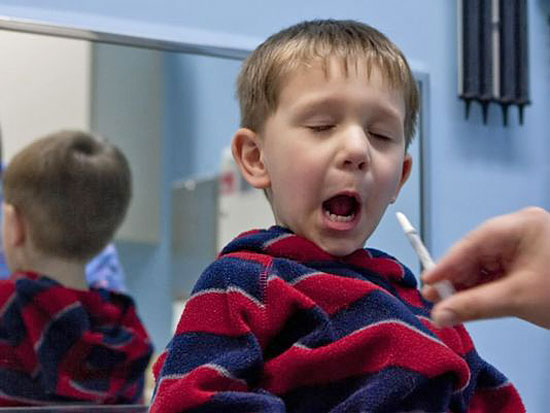

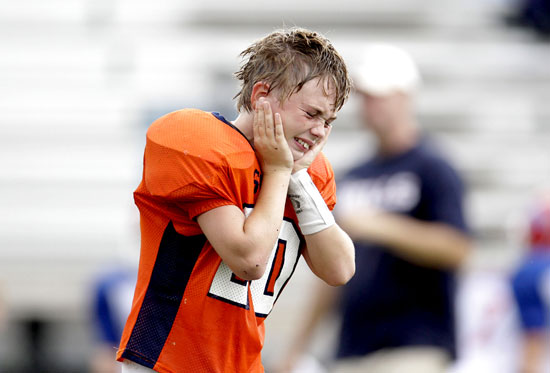

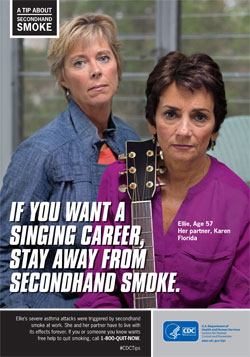
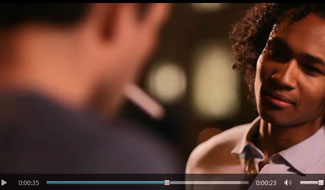

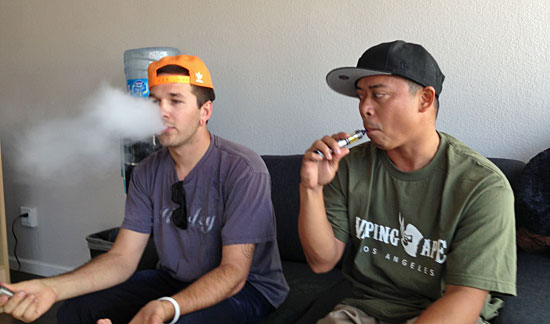

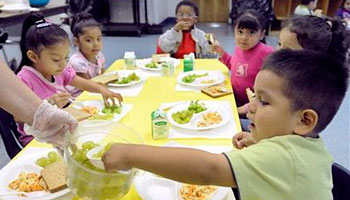
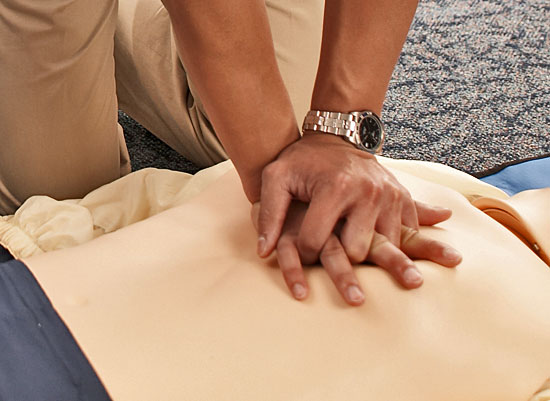







 405 bridge work causes a stink
405 bridge work causes a stink
